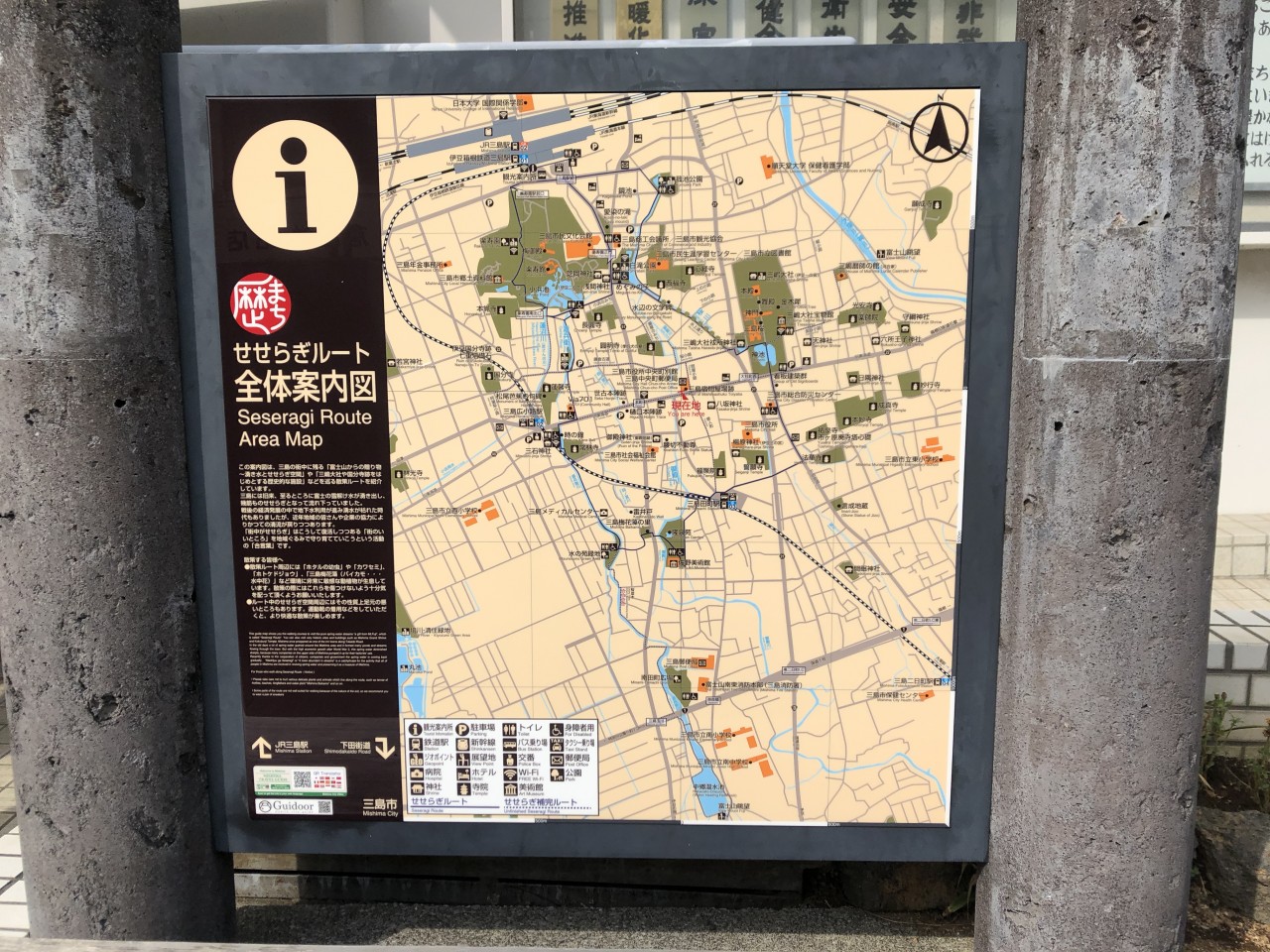(7) Mishima City Hall Chuocho Branch

Seseragi Walking route / (D) Mishima Taisha Shrine Area
Recommended Spots Nearby
Shinomiya River

The Shinomiya River is a small river diverging from the Genbe River.
It is said that its name is derived from Izu Shinomiya Hirose Shrine.
Mishima Taisha Shrine

The Mishima Taisha shrine is widely known as one of the most prestigious shrines in Japan.(“Ichinomiya”)
The date of its foundation is unknown.
Since ancient times, the shrine has protected the area of Mishima and hence on look the name “Mishima”.
Koshikiri-Fudo Stone Statue

The Koshikiri-Fudo Stone Statue is a stone Buddha image found at the bottom of the Goten River in 1633.
It got its name, “Koshi(waist) kiri(cutting)”, because it is only carved from the upper part of the waist; no lower part of the body.
The ruins of "Toiyaba (Administration office in Edo period)"

Mishima town flourished as the 11th post town on the “Tokaido road” that was the most important of the Five Routes of the Edo period in Japan, connecting Kyoto to Edo (Tokyo).
Old Kamakura Road

The “Kamakura Kodo” is a road that was developed to connect Kyoto and Kamakura when "Minamoto no Yoritomo" started Japan’s first Shogunate regime in Kamakura (Kamakura Shogunate), and it became the essential road for east-west traffic.
Riverside’s Literature Monuments (Mizukami-dori Road)

On the Mizukami-dori Street along the Sakuragawa River from Mishima Station to Mishima Taisha Shrine, there are 12 monuments of literary figures related to Mishima city, including the world-famous writers such as Dazai Osamu and Wakayama Bokusui.
Back to "Mishima City"


